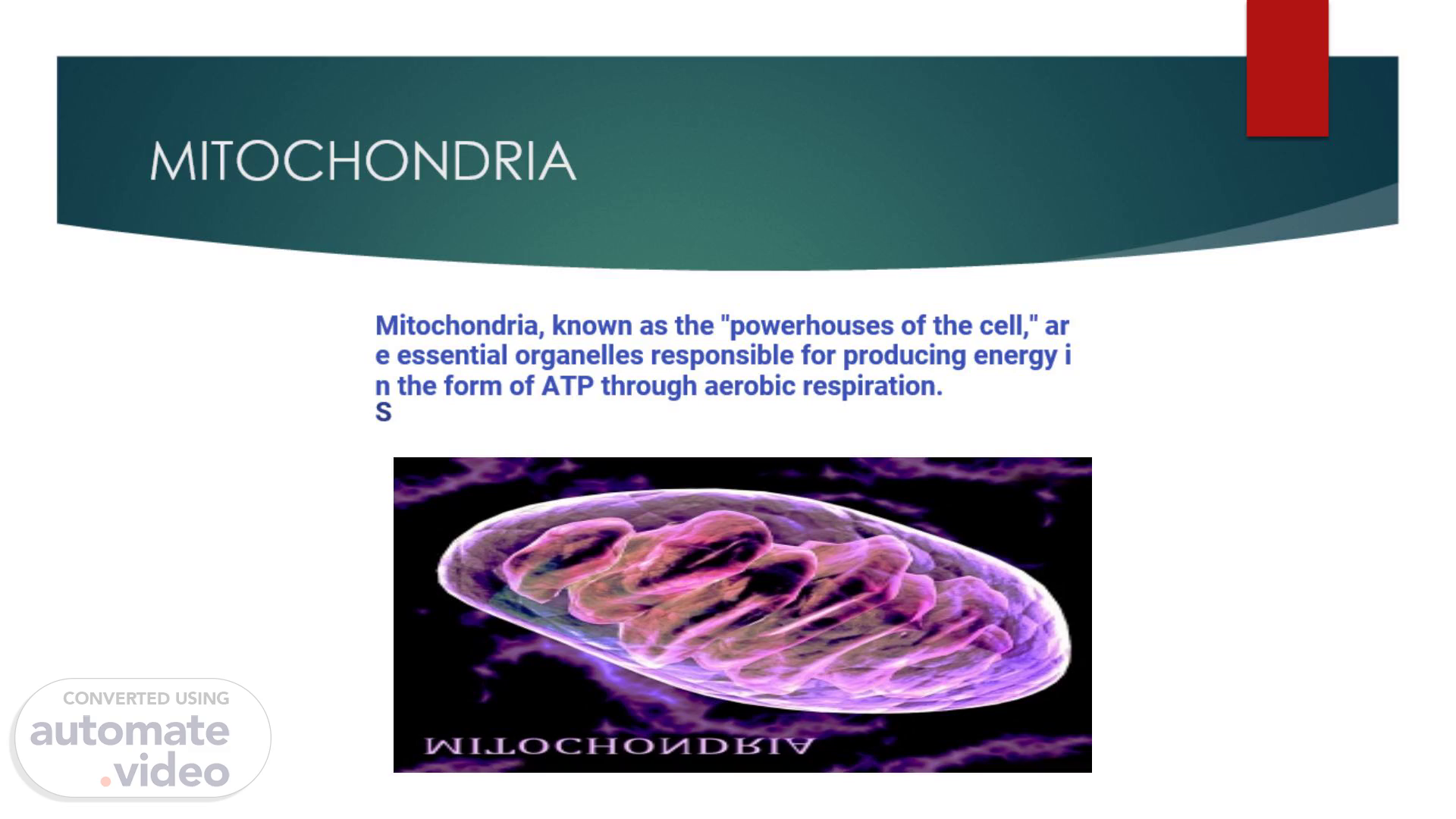Scene 1 (0s)
[Audio] Mitochondria, known as the "powerhouses of the cell," are essential organelles responsible for producing energy in the form of ATP through aerobic respiration. S.
Scene 2 (11s)
[Audio] Structure of Mitochondria Mitochondria are double-membraned organelles found in nearly all eukaryotic cells, including those of animals, plants, and fungi. They typically range in size from 0.5 to 10 micrometers and have a unique structure that includes: Outer Membrane: Smooth and permeable to small molecules and ions. Inner Membrane: Highly folded into structures called cristae, which increase the surface area for chemical reactions. Intermembrane Space: The space between the inner and outer membranes. Matrix: The innermost compartment containing enzymes, mitochondrial DNA, and ribosomes..
Scene 3 (58s)
[Audio] Functions of Mitochondria While best-known for producing energy, mitochondria actually serve several important functions within the cell: ATP Production: Mitochondria are the site of oxidative phosphorylation and play a critical role in the production of ATP through the electron transport chain. Calcium Storage: They regulate calcium ion concentrations within the cell, influencing various cellular activities. Programmed Cell Death (Apoptosis): Mitochondria initiate and regulate apoptosis, a process of programmed cell death necessary for the removal of damaged cells. Heat Production: In certain cells, mitochondria generate heat, a process known as thermogenesis. Metabolic Functions: Mitochondria play a role in several metabolic pathways, including the citric acid cycle (Krebs cycle), which is crucial for energy production. Signaling: Mitochondria play roles in hormone, immune, and intercellular signaling..
